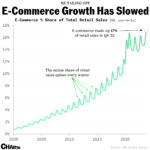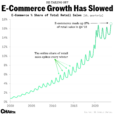
ASIA MARKETSAsian markets are set to commence trading on solid footing to start the new quarter, buoyed by signs of a “soft landing” in US inflation data on Friday and encouraging macro data from China over the weekend. The closely watched PMI prints showed an acceleration in both the manufacturing and service sectors.With much of Europe closed for Easter, Monday’s trading volume could be slightly lighter in the London session than usual. However, US stock and bond futures markets are open, so investors can react and capitalize on the latest macroeconomic developments.The manufacturing Purchasing Managers’ Index (PMI) in China climbed to 50.8 from 49.1 in the previous month, signalling a notable improvement in activity. Additionally, export orders showed signs of strengthening. The official services PMI also reached its highest level in June, while the composite PMI hit its highest in April. These positive numbers will boost Chinese and global markets throughout Monday’s holiday-abridged trading session.China has set a target to increase gross domestic product by approximately 5% this year. Still, many observers consider this goal elusive due to the prolonged downturn in the property sector and ongoing deflationary pressures.However, there are signs of improvement in the industrial sector, bolstered partly by robust exports. If additional fiscal support is provided and exports remain strong, which is expected given the weaker yuan, there is potential for economic momentum to improve.Back To That All Too Familiar PositionChair Jerome Powell commented on the latest inflation data released on Friday, stating it was “pretty much in line with our expectations.” He emphasized that the Federal Reserve should not lower interest rates until officials are confident that inflation is progressing toward the central bank’s target of 2%.As the Federal Reserve remains highly data-dependent, investors find themselves in that all too familiar position at the beginning of each month, eagerly awaiting the release of key economic indicators. Among these, the monthly Non-Farm Payrolls (NFP) report holds significant importance, often shaping market expectations regarding the Fed’s monetary policy decisions. However, it’s not until April 10th that investors will gain further insights into the Fed’s stance, particularly regarding its interpretation of the March Consumer Price Index (CPI) data. This upcoming CPI release will clarify whether the Fed is inclined to downplay the elevated inflation readings observed in January and February.While a significant miss on the Non-Farm Payrolls (NFP) headline figure would solidify expectations for a rate cut in June, this outcome is already largely priced into the market. However, it’s unlikely that any NFP report on its own would be dire enough to prompt consideration of a rate cut at the May meeting. Fed officials, including Chair Powell, have consistently advocated for patience, emphasizing the economy’s resilience despite an uneven path toward achieving the Fed’s inflation targets.The unemployment rate is expected to hold steady at 3.8%. Economists are beginning to piece together the puzzle of the US labour market’s seemingly “pain-free” adjustment process. Immigration has emerged as a critical factor in this equation, influencing labour market dynamics historically and in the foreseeable future.In addition to the highly anticipated jobs report, investors will face a flurry of top-tier US economic releases scheduled for the first week of every month. These include updates on job openings, ADP’s private hiring figures, and the ISM releases. Market participants will scrutinize these reports closely for any incremental clues regarding the next phase for the US economy, whether it involves re-acceleration or deceleration.Meanwhile, in Europe, inflation data for March will be released ahead of the European Central Bank’s (ECB) April gathering. In Japan, the Tankan survey is scheduled to be published, providing insights into business sentiment in the country.Additionally, traders will closely monitor a series of speeches from Federal Reserve officials, including Fed Chair Jerome Powell himself, scheduled for Wednesday. These speeches could further clarify the Fed’s monetary policy stance and outlook for the economy.FOREX MARKETCurrency markets continue to be impacted by Fed Governor Christopher “No Rush” Waller’s moderately hawkish stance. This leads traders to track Treasury vs BUND and JGB competing yields solely, which frequently influence currency movements closely.However, attention will again focus on Asia’s two largest economies, Japan and China. The Japanese yen remains in what is commonly called “intervention” territory, indicating that authorities may monitor its exchange rate closely and offer up stern warnings if the currency weakens too fast. Meanwhile, China’s yuan faces pressure against the US dollar but has reached a 30-year high against the yen.Last week, the yuan experienced a decline in spot trading, reaching its weakest level of the year, with the offshore USDCNH pair hitting 7.26 per dollar after a weaker fix was interpreted as mainland policymakers welcoming a weaker Yuan. However, the People’s Bank of China (PBOC) has maintained the daily fixing rate at a virtually unchanged level, around 7.0950, for the past four days. This suggests that the PBOC may be attempting to prevent any significant weakening of the yuan, and their goal may be to possibly avoid a more significant sell-off and create a sudden rush of unwanted outflows and volatility in the domestic capital market.However, Beijing’s situation is further complicated by the yuan’s exchange rate with the yen, which is currently at a 30-year high. This gives Japan a competitive advantage in international trade, potentially impacting China’s trade dynamics.OIL MARKETSOil prices surged by 16% in the latest quarter, signalling that export curbs by OPEC and its allies are effectively reining in global supplies. West Texas Intermediate (WTI) futures closed above $83 a barrel on Friday, marking the highest settlement in over a week. This price surge has been accompanied by a shift in market structure from bearish contango to bullish backwardation, indicating a tightening physical market.The OPEC+ alliance’s decision to extend daily supply cuts of approximately 2 million barrels through the end of June has bolstered expectations of reducing global stockpiles.Furthermore, geopolitical tensions in the Middle East and Ukraine’s drone strikes on Russian energy infrastructure have added to supply concerns, contributing to the upward pressure on prices.Despite these supply-side factors, the US witnessed strong advances in key gauges of economic activity on Thursday, suggesting healthy growth. However, this positive economic momentum was somewhat tempered by increased domestic crude and gasoline stockpiles, which has partially offset the supply tightness observed in global markets.It’s been a hot topic among traders lately, especially after JP Morgan analysts released a note that garnered significant attention. The discussion revolves around the possibility of oil prices hitting triple digits, something many were quietly considering but hesitant to voice aloud. If Brent crude were to reach such heights by September, it would mark the first time in two years.The driving force behind this potential surge is Moscow’s decision to cut production in the coming quarter further, purportedly aimed at impacting Biden’s reelection prospects. This move stems from Moscow’s displeasure with Biden’s support for Ukraine in the ongoing conflict. Despite objections from the US regarding Ukraine’s drone attacks on Russian oil infrastructure, Moscow sees this as an opportunity to exert pressure on Biden, who already faces a challenging reelection battle this year. With petrol prices already on the rise, increasing by almost 15 percent this year to around $3.50 a gallon, the situation could spell double trouble for Biden and further escalate tensions in the energy market.More By This Author:A Rosy Turn In The Market
Supply Chain Woes Rock The Boat
Asia Open: Context Is Everything & Xi’s Personal Touch
















